Over the past several weeks we have consulted with a number of San Diego patients seeking to have cosmetic surgery to enhance the appearance of the lower face and upper neck region. A good percentage of these patients have asked what the difference is between having a lower facelift and an upper neck lift. Because this inquiry has arisen during many of these consultations, I thought it would be helpful to post my answer here on our blog for any future facelift/neck lift patients considering this type of facial plastic surgery. In general, when facial plastic surgeons use the term ‘facelift’ to describe a procedure, they are really talking about the lower one-third of the face as well as the upper one-third of the neck region. But when patients initially think of the term facelift, they often times conjure up images of lifting the entire face from the jawline to the forehead. So you can see where the misunderstanding arises when discussing what a facelift procedure does. 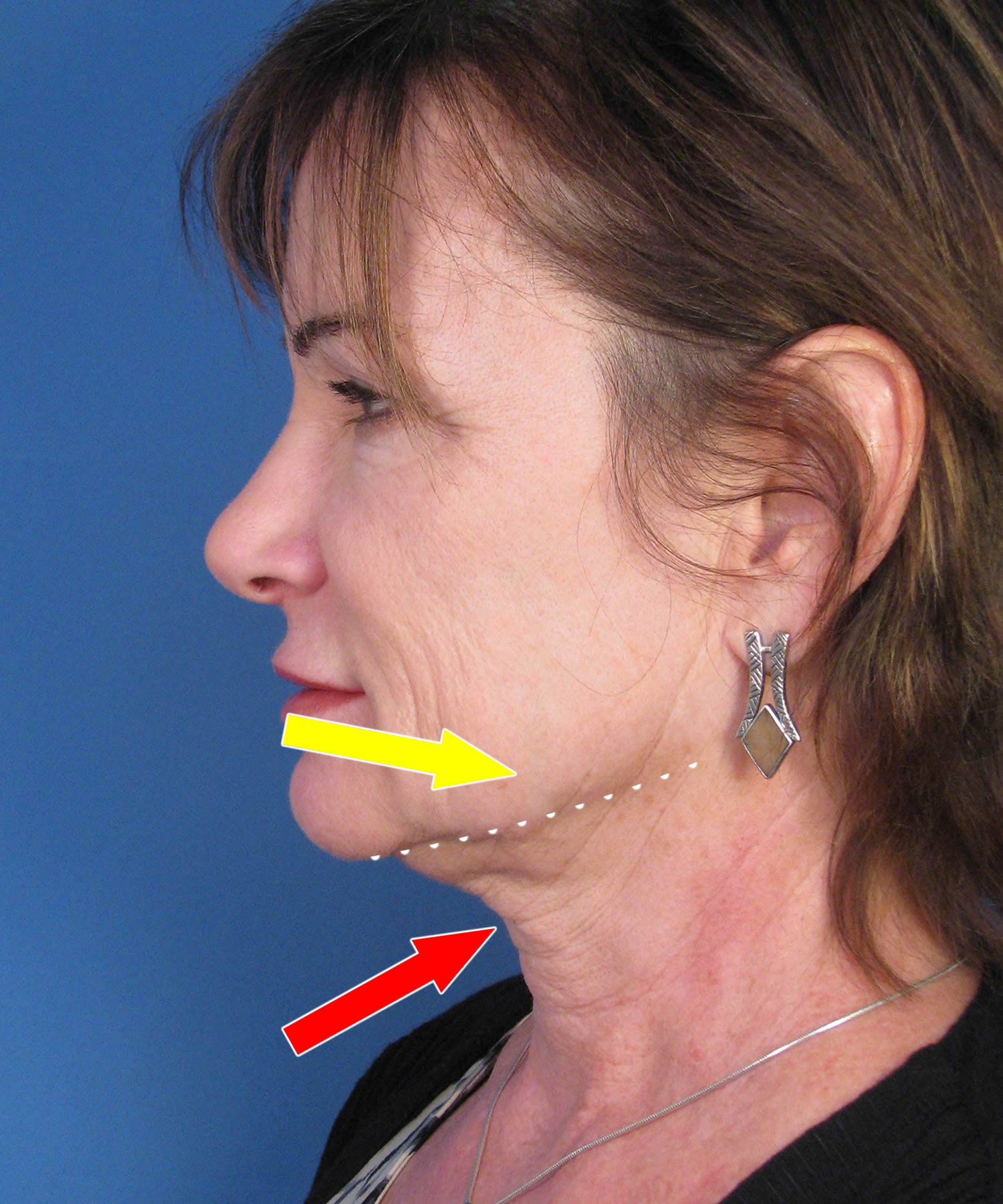 A good example of this is shown visually in the adjacent patient. This is a middle-aged female from San Diego, CA who consulted with our office desiring a procedure to help make her look more rested and youthful. As you can see from this profile view, she has excess, sagging skin folds along the lower face continuing into the upper neck region. As is noted in the photo diagram, the dotted line distinguishes where the lower face comes to an end (yellow arrow) and the upper neck begins (red arrow). So, as you might imagine, pulling up on the soft tissue of the lower face is also going to elevate the soft tissue of the upper neck. And, in fact, this is precisely what a ‘facelift’ procedure does – both the lower face and upper neck. During the operation, we lift up the skin going from in front of the ear across the face, down into the neck and behind the ear. Once this is done, the deeper tissues of the face (referred to as the SMAS layer) are used to perform the actual lifting. The excess, or redundant, skin is then removed and the incision line is closed very carefully. The end result should be a more rejuvenated, rested looking face and neck. Now there are certainly other procedures that are also referred to as ‘neck lifts’ – but these are isolated neck lifts that are intended to tighten the area from under the chin. Unlike what we refer to as a facelift, these type of lifts do not do much for lower face enhancement.
A good example of this is shown visually in the adjacent patient. This is a middle-aged female from San Diego, CA who consulted with our office desiring a procedure to help make her look more rested and youthful. As you can see from this profile view, she has excess, sagging skin folds along the lower face continuing into the upper neck region. As is noted in the photo diagram, the dotted line distinguishes where the lower face comes to an end (yellow arrow) and the upper neck begins (red arrow). So, as you might imagine, pulling up on the soft tissue of the lower face is also going to elevate the soft tissue of the upper neck. And, in fact, this is precisely what a ‘facelift’ procedure does – both the lower face and upper neck. During the operation, we lift up the skin going from in front of the ear across the face, down into the neck and behind the ear. Once this is done, the deeper tissues of the face (referred to as the SMAS layer) are used to perform the actual lifting. The excess, or redundant, skin is then removed and the incision line is closed very carefully. The end result should be a more rejuvenated, rested looking face and neck. Now there are certainly other procedures that are also referred to as ‘neck lifts’ – but these are isolated neck lifts that are intended to tighten the area from under the chin. Unlike what we refer to as a facelift, these type of lifts do not do much for lower face enhancement.
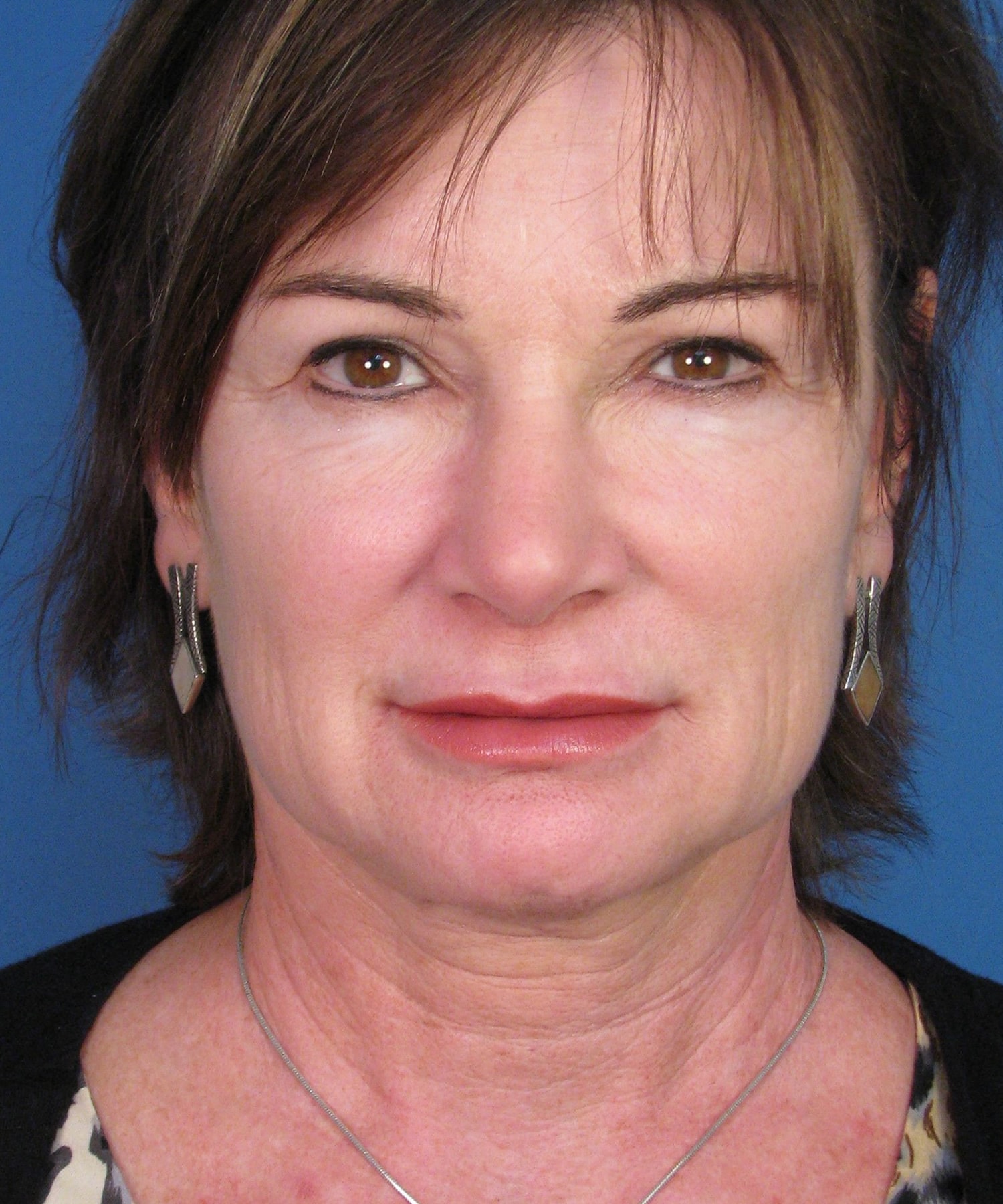
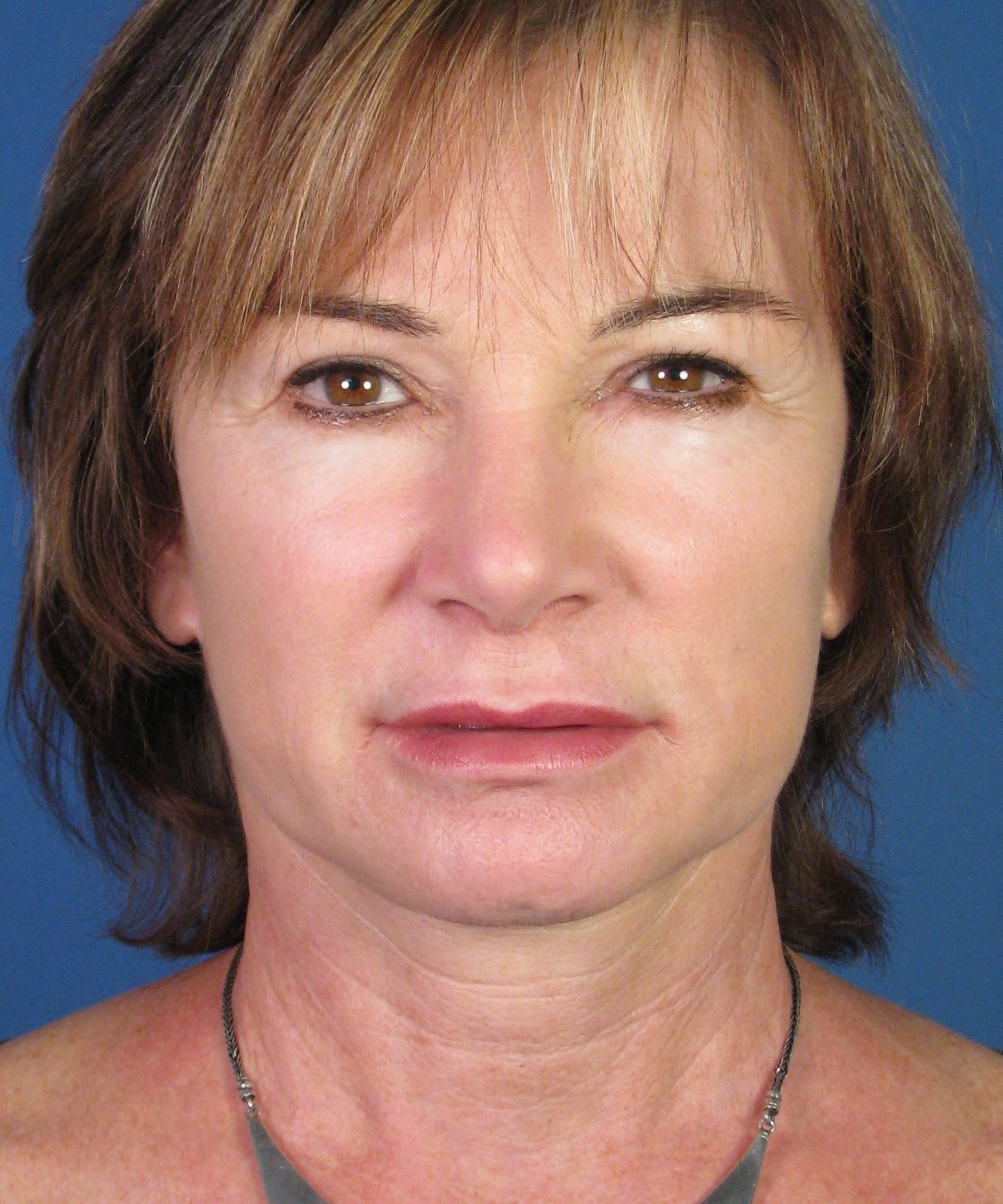
A good example of a facelift procedure is shown here. This is obviously the same patient featured above. In the before and after facelift photos, you can appreciate the overall improvement in her jawline and neck region. On the frontal view, you can see that her neck has been tightened and the jawline has now been refined. But she doesn’t look pulled or stretched. This is especially true around the mouth area where many facelift patients are concerned they will look like the joker! And as pointed out above, you can see that the facelift targeted the lower one-third of the face and upper one-third of the neck.
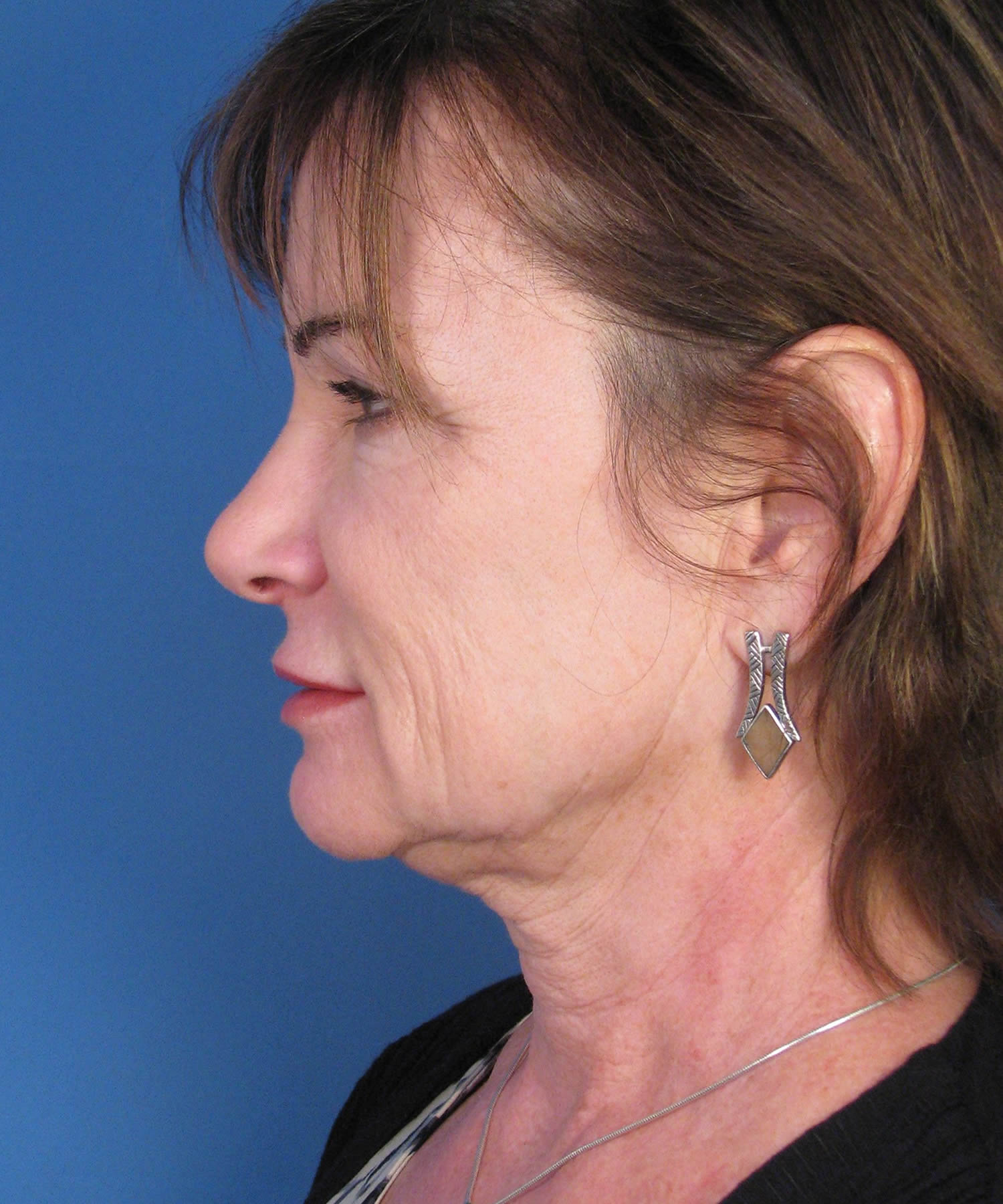
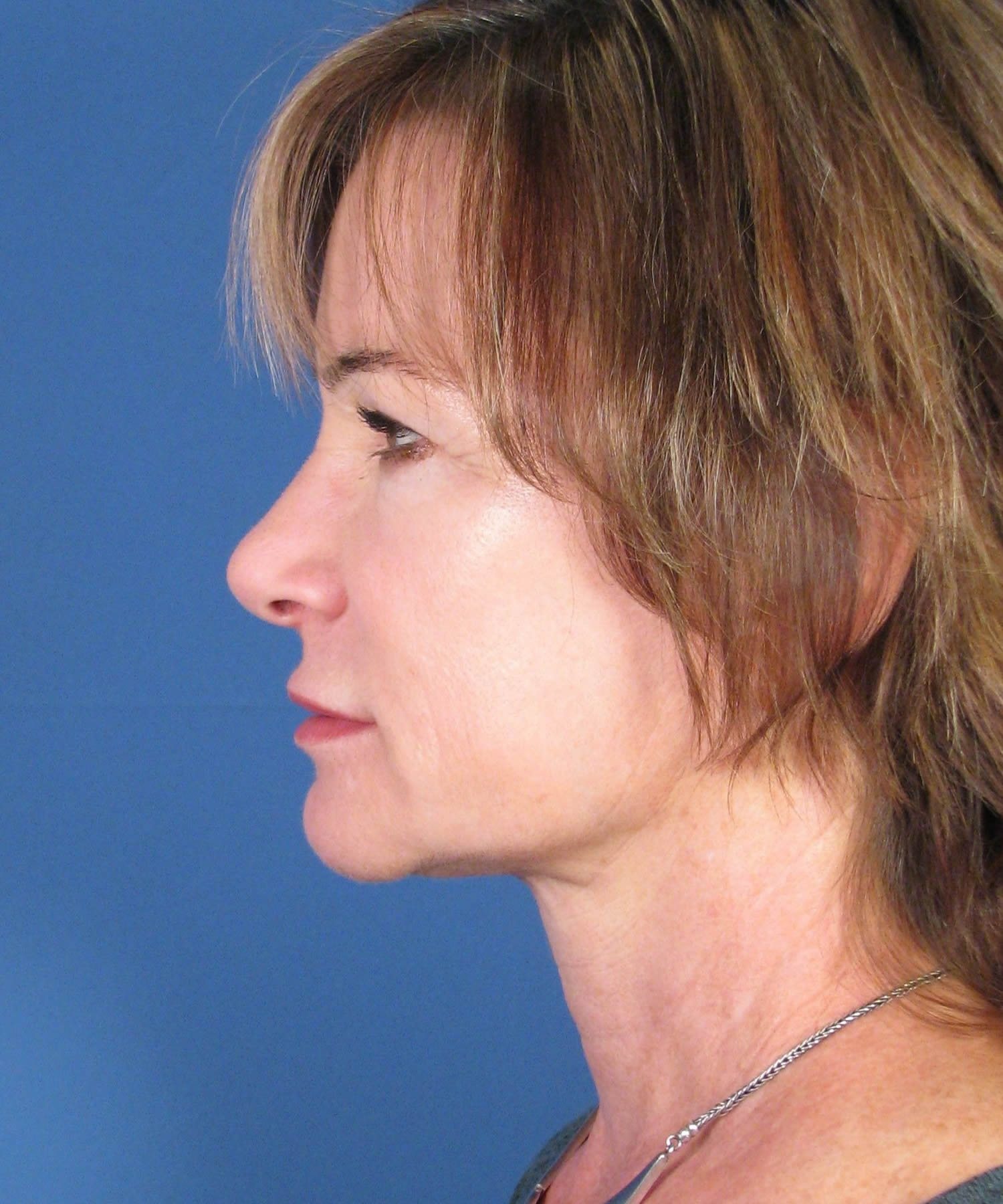 On side view of this patient, you can now see after surgery that her jawline is much more visible without the excess skin folds previously noted. In addition, you can now see a clear division between her lower face and upper neck. Overall, you will also appreciate that she still looks like the same person – just a more rested, youthful version of herself. And that is the essence of doing good facelift work – that you provide the patient with a nice, natural looking enhancement without altering their identity.
On side view of this patient, you can now see after surgery that her jawline is much more visible without the excess skin folds previously noted. In addition, you can now see a clear division between her lower face and upper neck. Overall, you will also appreciate that she still looks like the same person – just a more rested, youthful version of herself. And that is the essence of doing good facelift work – that you provide the patient with a nice, natural looking enhancement without altering their identity.
